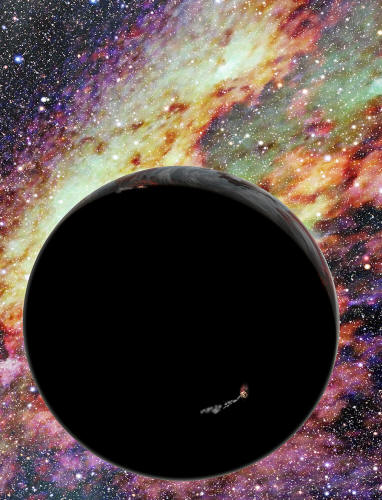|
by David A. Aguilar and Christine Pulliam March 22, 2012 from CFA.Harvard Website
The discovery intrigued theorists, who wondered:
New research shows that the answer is yes.
Not only do runaway planets exist, but some of them zoom through space at a few percent of the speed of light - up to 30 million miles per hour.
Such speedy worlds, called hypervelocity planets, are produced in the same way as hypervelocity stars.
A
double-star system wanders too
close to the super-massive black hole at the galactic center. Strong
gravitational forces rip the stars from each other, sending one away
at high speed while the other is captured into orbit around
the black hole.
They found that the star ejected outward
could carry its planets along for the ride. The second star, as it's
captured by the black hole, could have its planets torn away and
flung into the icy blackness of interstellar space at tremendous
speeds.
However, a small fraction of them could gain much higher speeds under ideal conditions. Current instruments can't detect a lone hypervelocity planet since they are dim, distant, and very rare.
However, astronomers could spot a planet orbiting a hypervelocity star by watching for the star to dim slightly when the planet crosses its face in a transit. For a hypervelocity star to carry a planet with it, that planet would have to be in a tight orbit.
Therefore, the chances of seeing a transit would be relatively high, around 50 percent.
Eventually, such worlds will escape the Milky Way and travel through the intergalactic void.
The research will be published in the
Monthly Notices of the Royal Astronomical Society, in a paper
(Hypervelocity
Planets and Transits Around Hypervelocity Stars) authored
by Idan Ginsburg, Avi Loeb, and Gary Wegner
(Dartmouth College).
CfA scientists, organized into six
research divisions, study the origin, evolution and ultimate fate of
the universe.
|



